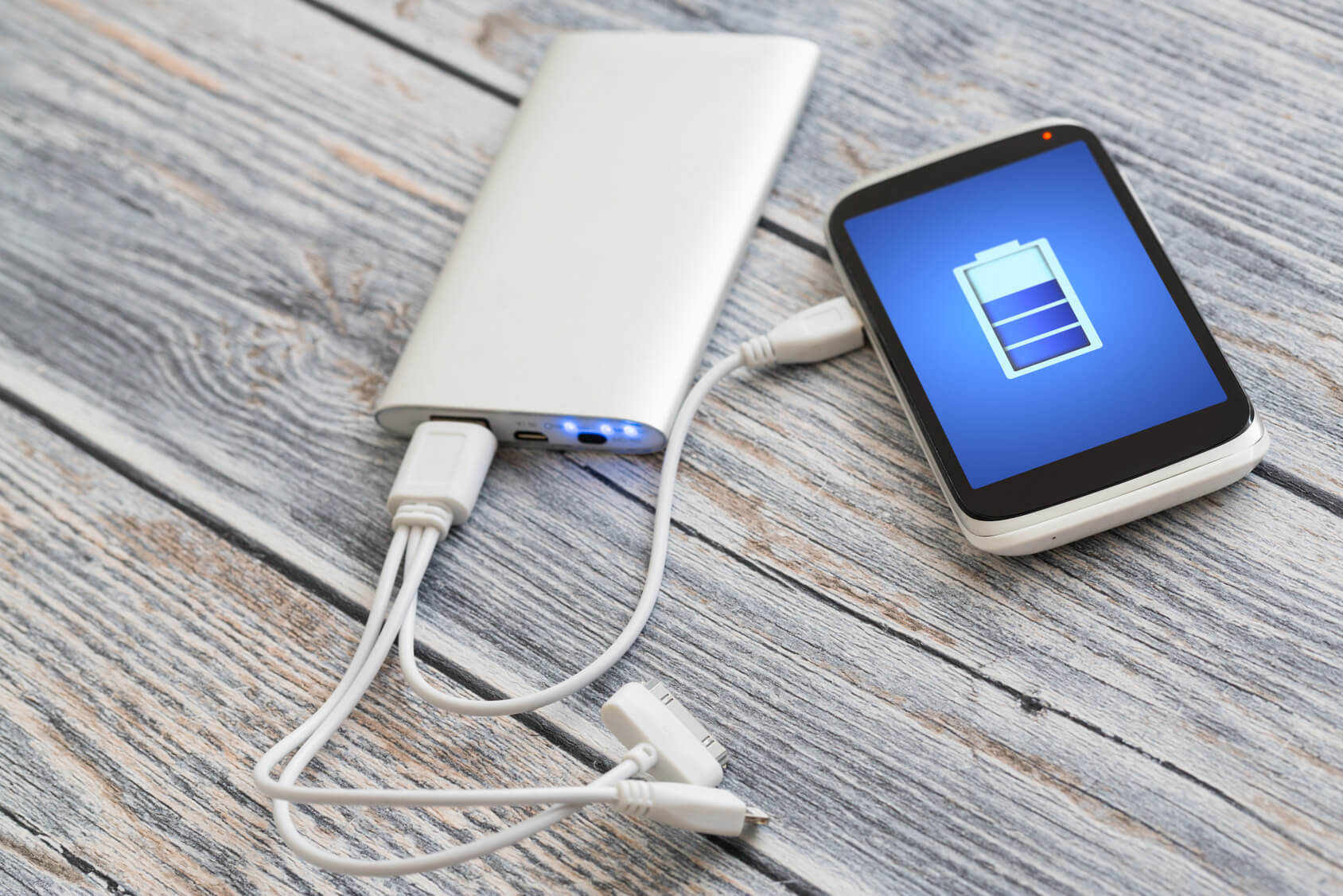It’s what any smartphone owner wants to avoid: out and about, early afternoon, nowhere near a power socket, and the battery level indicator is showing red. This is when power banks come into their own. Because they charge your smartphone battery whilst you’re on the move. And not only that, the power bank can even be used to charge tablets and cameras.
In principle, actually anything that has a USB port — notebooks too. But you can’t use a power bank, also known as a power pack, to charge everything. We’ll tell you what you’ll need for what purpose.
Key features of power banks
The most important feature of such a battery pack is the capacity. It is stated in milliampere hours (mAh). The values usually start at around 2000 mAh, ranging up to 20,000 mAh and more. What is obvious is that: The greater the capacity, the more you can charge.
But at the same time, the greater the capacity, the larger and heavier the power bank. Whether a power bank weighs less than 100 grams or more than 500 grams makes a real difference. Also the size range can range from that of a lipstick up to a small pocket book.
For example if a device can fit comfortably in your pocket, it usually means it does not have much more than 5000 mAh capacity.
As well as capacity, size and weight, the number and type of ports as well as charging current also play an important role. There is always at least one USB port. Many devices also have two or three of them and some of them also have a circular socket that allows you to charge notebooks too.
Various power banks also have a charging cable with micro USB port integrated in the housing, which allows you to connect directly to devices with a corresponding charging port. The charging current is also crucial to how quickly the end device to be charged can be recharged again.
Power banks with 1000 mA of charge current need a lot more time than power packs with 2000 mA for example.
Also important: Does a display show the charging status of the power bank? If you’re not using your power pack all the time, you can easily lose sight of when it needs to be recharged. Many power banks have a display with three to four LEDs and some even have a digital display. But there are also some that only use a single diode and only tell you whether the device is on or off.
What is the capacity of the batteries in my devices?
The next step is to determine the capacity of the mobile devices. This number can be found in the technical data of the operating instructions. But there are also some general guidelines:
The battery of a smartphone is usually between 1000 and 2000 mAh.
“Phablets”, i.e. smartphones with very large displays around the 6-inch mark, are already at 3000 mAh.
Tablets such as iPads are around the 10,000 mAh mark, and some models are even higher.
A smartphone with 2000 mAh, for example, can be charged twice by a power bank with a capacity of 5000 mAh. But usually not much more than that. You should always take around 20 percent off the specified manufacturer’s value as cell capacity differs from output capacity due to power loss related to the charging connection, for example.
It all depends on what you intend to use pack for
The range of power banks is very large. Therefore we advise thinking things through one last time before making your purchase. What do you really need the battery pack for? If you just want to make sure that your smartphone stays charged for the whole day, you are best off buying a small 5000 mAh power pack with a USB port.
For multiple devices, including an iPad, you should have at least 15,000 mAh, and also two USB ports. If you’re out at sea for a longer period of time or would like to charge a notebook on the move, 20,000 mAh and the corresponding ports would be the best option.
Image sources
Fotolia / 85480571 / Artur Marciniec













